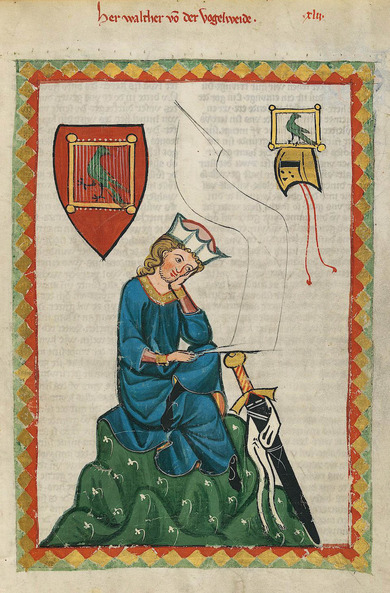Oral traditions of storytelling and cultural transmission
Oral traditions of storytelling and cultural transmission
In Classical civilisations, the singer was the one responsible for safeguarding spiritual myths and wisdom and disseminating them outside the sacred sphere. His key role was primarily to preserve and convey this knowledge, and by doing so he contributed significantly to stabilising the social order.
Werner Faulstich, Mediengeschichte von den Anfängen bis 1700 (The History of Media Until 1700), 2006
Long before writing entered common use, ideas of religious, historical, and everyday practical importance were passed on orally from generation to generation. The typical forms of this oral memory culture include myths, fairy tales, legends, riddles, proverbs, prayers and songs. These forms are still familiar to us today, but were not committed to paper until later. Singing poetry in rhythm proved to be a particularly catchy way to stimulate memory and imagination. As legend has it, the oldest European epic poems, the Iliad and the Odyssey, were composed in the 8th century B.C. by the Greek poet Homer. They were then performed by bards called aoidoi at courtly palaces and large public festivals. In later generations, the wandering singers of Antiquity were divided into rhapsodists, who recited epics, and citharists, who sang poems while playing a string instrument known as a cithara. Over the centuries, these methods of transmission also preserved important works of mythology in other European cultures, among them the Old Norse collection of poems known as the Edda (13th century).
In the High Middle Ages, the tradition of sung verse blossomed once more with the courtly love poems of troubadours and minstrels. Another tradition which would last into the 19th century was that of “cantastoria”, whereby travelling performers and later colporteurs spread news, gossip and entertaining stories. In some cultures where literacy is still less widespread, the bardic tradition continues to this day and centuries-old texts continue to be conjured up from memory. A testament to this in Germany, for instance, are the many old fairy tales and folk songs that often existed in a range of regional forms before being written down. These were primarily rediscovered during the period of German Romanticism (around 1800) as a treasured element of cultural heritage.

